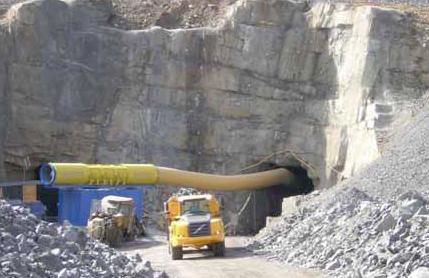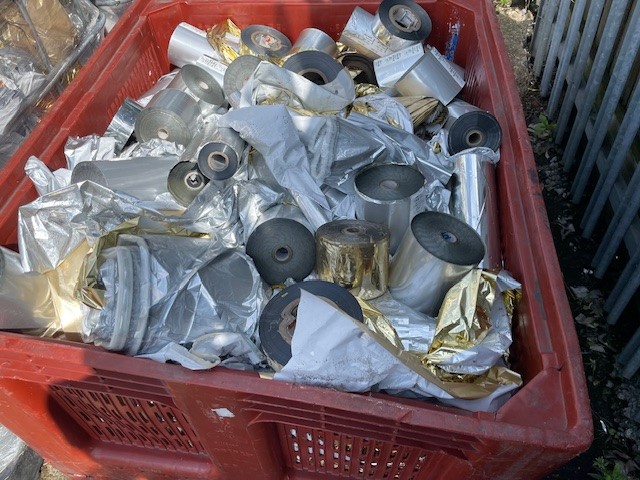
Zinkgruvan, the southernmost base metal mine in Sweden, celebrated the end of 2010 with a double whammy: the completion of two vital projects.
These days, Zinkgruvan near Örebro in Sweden is popular with German tourists who go there in the winter for the skiing and in the summer for access to the great lakes nearby. Its origins a century-and-a-half ago reflect its name though, and are entirely utilitarian. It translates as ‘zinc mine’, and that is what the community and its economic importance have been based on since ground was broken in 1857.
The surface operations and even the tailings are fairly circumscribed, but the underground operations are extensive, as one would expect after all the time it has been yielding mainly zinc/lead ore, with a certain amount of silver as well. Despite the tourists, the mine is still the biggest employer locally, with some 420 personnel on its books. The mine is wholly-owned by the Lundin Mining Corporation of Canada.
Zinc production from the mine in 2009 was above 70,000 tonnes, with an additional 36,000 tonnes of lead and 1.8 million ounces of silver. As a rule, all Zinkgruvan's output is sold on long-term contracts. However in late 2004 Lundin Mining sold all of the mine’s future silver production to Silver Wheaton Corporation for an upfront payment of $50 million in cash plus shares and options as a means of raising funding for its other development interests.
It had been known since the late 1990s that there was also copper bearing ore in the vicinity of and accessible to the mine, and the last 10 years have seen the introduction of a programme to define and then exploit these resources in parallel with the zinc/lead operations—which will always remain the core product of Zinkgruvan, says managing director Sam Rasmussen. With the objective of adding serious copper production capacity and at the same time enhancing the flexibility of zinc mining, Lundin began expansion of Zinkgruvan in 2007. Last year saw the fruition of this project.
Alongside the existing crushing and concentration facilities, a €16 million semi-autogenous grinding (SAG) mill was installed by Metso. SAG grinding processes material in a grinding mill, using steel balls as well as the run of mine ore feed to break it down. Metso supplied the equipment for the primary and secondary crushing stages, grinding, flotation and pressure filtration, as well as the pumping and conveying of processed copper ore. The contract included supervision of erection and start-up.
The new line, or circuit, increased Zinkgruvan’s ore processing capacity by a third, and was commissioned in June 2010, to Rasmussen’s great satisfaction. “The copper circuit was installed on time and just as it had been planned. It has been producing copper concentrate in commercial quantities since then.” There have been no surprises, he says, and the quality of the concentrate, at around 26 per cent copper, is just as Zinkgruvan’s metallurgists predicted, or a little better.
Selling copper is not a problem these days of course, as testified by the amount of new capacity coming on-stream worldwide. “We are still in negotiations for longer term contracts on the copper,” says Rasmussen. “Initial shipments will be sold spot while we search for longer tem agreements. There is huge demand and we have had no trouble selling it on the spot market—in fact we completed our first spot sale of copper concentrate in April 2011.”
The addition of a significant additional operation to the long-established mine has caused quite a bit of disruption—but in a positive way. “There will be some modification to the copper circuit during 2011 to increase its flexibility for possible future processing of zinc/lead ores; though for the time being it will remain dedicated to copper,” Rasmussen continues. “The important thing is being able to respond to the rise and fall in market demand, and optimise the company’s net present value [NPV].”
Associated with the copper project, though ironically quite separate from an operational point of view, was the construction of a 5.5 kilometre ramp so that ore, people and materials can be driven by truck to and from the underground operations. The ramp is basically a tunnel, though it is referred to a daylight ramp since it makes the underground as accessible as the above ground facilities. It was built by local firm Bergteamet AB which again delivered the project according to plan.
The daylight ramp was opened on November 17 last year. “This was an historic event in Zinkgruvan’s 150 year history,” Rasmussen enthuses. “At last, man and machine can enter the mine through a daylight ramp!” It has expanded the mine’s possibilities immeasurably. Previously, everything had to be hoisted vertically through a shaft. Now the shaft is free to bring up copper bearing ore to feed the new processing circuit—the zinc/lead ore, the wood and concrete, the consumables and everything necessary for running the mine will go along the ramp.
Records are being broken regularly, says Rasmussen, and there are many more benefits to be exploited. “For example the daylight ramp gives us the opportunity to make positive changes to the ventilation system—it is a tool that will benefit every aspect of our operation.” Bergteamet has been contracted to bring up a minimum of 110,000 tonnes of ore during 2011, he says, while a new mining partner, Befab, will conduct the underground haulage operations over the next three years.
The new ramp will also be critical in the development and continued extraction of zinc/lead ore from the mine’s western field. That way, it will play its part in the flexibility being planned above ground, enabling the underground assets to be delivered to the market in a pattern dictated by the customers, rather than by the ability of the mine to produce. Rasmussen’s aim is to make Zinkgruvan a truly customer focused operation in an industry that has been characterised by its vulnerability to fluctuations in price and demand.
And he is very happy with the achievements of the last year. Both projectshave gone through with admirablesafety and environmental performance levels. Commitment from the local community, which has seen at least 15 permanent full-time jobs added as a result of the expansion, has been fantastic. “We hire them, we train them, and we can offer them a really worthwhile career. As our operations become more diverse we need people to be able to work equally well on the different mineral circuits.”
DOWNLOAD
 Zinkgruvan_APR_11_emea-bro-s.pdf
Zinkgruvan_APR_11_emea-bro-s.pdf












